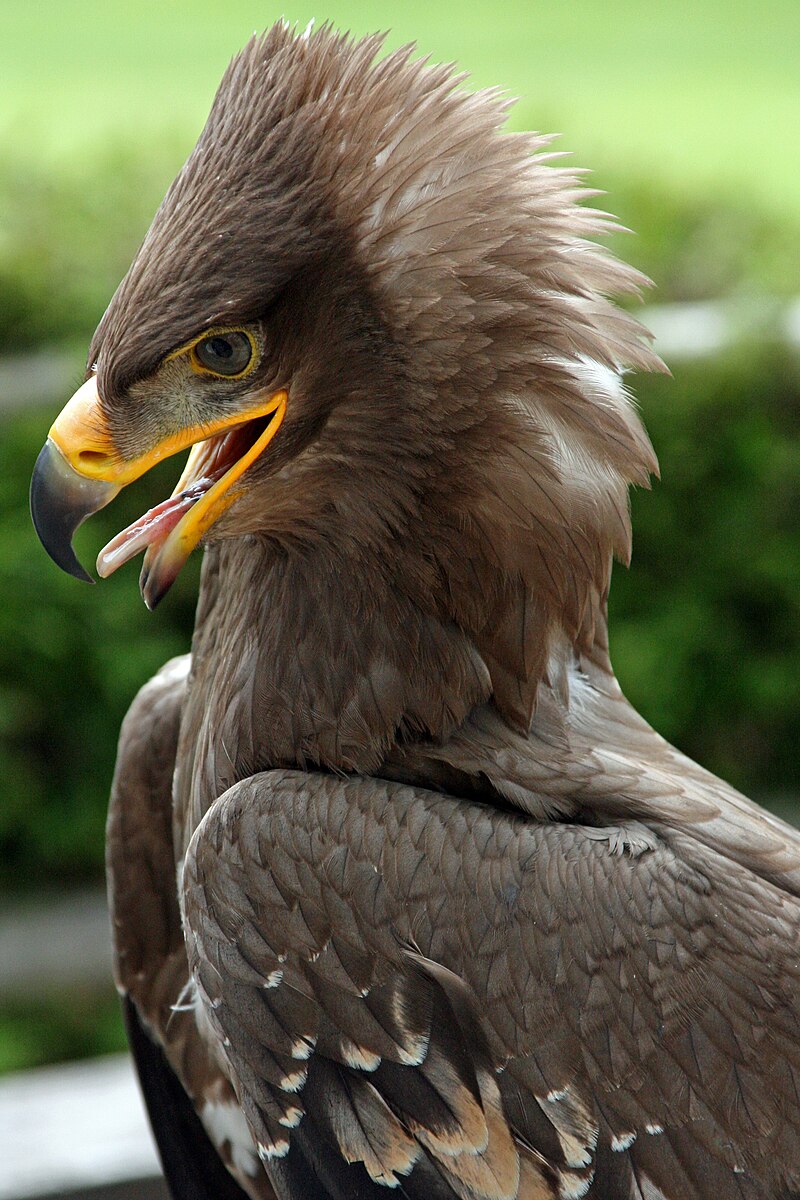The Steppe Eagle (Aquila nipalensis) is a large eagle species known for its remarkable wingspan, which can range from 170 to 200 cm. This majestic bird is a true sight to behold as it glides effortlessly through the open skies of far eastern Europe.
The Exact Steppe Eagle Wingspan
The Steppe Eagle’s wingspan is a truly impressive feat of nature, measuring between 170 to 200 cm (5.6 to 6.6 feet) in length. This wingspan is approximately 2.6 times greater than the eagle’s total body length, making it a wide-looking bird with a commanding presence in the sky.
Comparing Steppe Eagle Wingspan to Other Eagles
 Image source: Steppe Eagle by Fimb
Image source: Steppe Eagle by Fimb
When compared to other eagle species, the Steppe Eagle’s wingspan is quite substantial. For example, the Golden Eagle (Aquila chrysaetos) has a wingspan of 180 to 230 cm, while the Bald Eagle (Haliaeetus leucocephalus) has a wingspan of 180 to 240 cm. The Steppe Eagle’s wingspan falls within the range of these larger eagle species, showcasing its impressive size and power.
| Eagle Species | Wingspan Range (cm) |
|---|---|
| Steppe Eagle | 170 – 200 |
| Golden Eagle | 180 – 230 |
| Bald Eagle | 180 – 240 |
Steppe Eagle Migratory Behavior and Habitat
The Steppe Eagle is known for its migratory behavior, covering vast distances during its annual journeys. These eagles breed and spend their summers at high altitudes, then fly to the Middle East and Southern Africa for the winter. This migratory pattern is a testament to the Steppe Eagle’s impressive physical capabilities and adaptability.
Habitat destruction due to the expansion of intensive agriculture is the main threat to the Steppe Eagle. These eagles have not adapted well to modern agricultural landscapes, leading to a significant decline in their population. It is essential to preserve existing habitats and modify modern agricultural practices to support a larger number of species that are at home in the open plains.
Steppe Eagle Physical Characteristics
In addition to their impressive wingspan, Steppe Eagles have several other distinctive physical characteristics. Adult Steppe Eagles are uniformly dark brown, while juveniles have a white band on their wings, both on the top and bottom. Female Steppe Eagles are considerably larger than males, with males being more similar in size to the Bonelli’s Eagle.
Threats to the Steppe Eagle Population
The Steppe Eagle faces two primary threats to its survival: habitat destruction and electrocution on power lines. The expansion of intensive agriculture has led to the loss of the open plains that the Steppe Eagle calls home, forcing the species to adapt to less suitable environments. Additionally, electrocution on power lines is a serious problem that needs to be addressed effectively to give the existing populations of Steppe Eagles a chance of survival.
Conservation Efforts for the Steppe Eagle
To protect the Steppe Eagle and ensure its continued survival, it is essential to implement conservation measures that address the threats facing the species. This includes preserving existing habitats, modifying agricultural practices to be more wildlife-friendly, and implementing measures to mitigate the risk of electrocution on power lines.
By working together to protect the Steppe Eagle and its habitat, we can help ensure that this magnificent bird continues to soar through the skies for generations to come.

